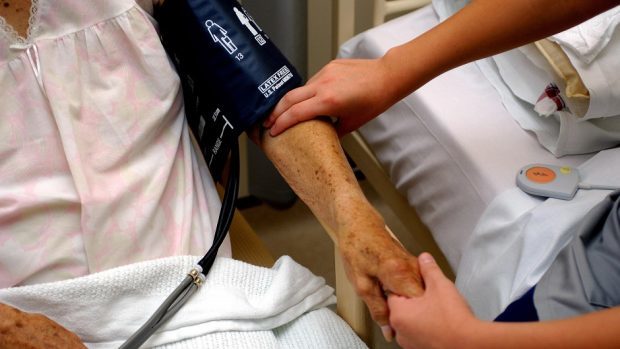Do you know the signs of sepsis? If you don’t, you’re far from alone. But considering there are 150,000 cases every year in the UK, resulting in more than 44,000 deaths, which is more than breast, bowel and prostate cancers combined, perhaps it’s time we all got a bit more sepsis savvy – especially as deaths can be avoided if the condition is spotted and treated quickly enough.
Earlier this month, the Health Service Ombudsman highlighted that nine-year-old Thomas Hull’s death from sepsis would have been avoidable, were it not for a ‘catalogue of mistakes’. The youngster was reportedly sent home from an overcrowded A&E unit in Merseyside after being diagnosed with a mild chest infection – and died six hours later.
His case echoes that of one-year old William Mead from Cornwall, who died from sepsis in December 2014, also after a series of failings by medical staff. A report highlighted how despite multiple GP visits, as well as calls by William’s mother to the NHS 111 helpline and out-of-hours services, the condition, and opportunities to treat it, were missed.
Danger alert
In a bid to reduce deaths like these, the UK Sepsis Trust (UKST) is calling for both the public and health professionals to be more aware of this ‘silent killer’. So what exactly is sepsis?
Also known as septicaemia or blood poisoning, it’s a life-threatening condition caused by the way the body responds to germs – usually common bacteria which we all come into contact with every day without problems. Sometimes, however, the body responds abnormally to these infections and causes sepsis, potentially leading to shock and multiple organ failure.
As it’s triggered by bacterial infections, a cold or flu is unlikely to lead to sepsis, but it can occur following chest infections such as pneumonia, water infections, problems in the abdomen like gall bladder infections, or simple skin injuries.
“Sepsis is better thought of not as a severe infection, but as the body’s response to an infection that begins to injure its own tissues and organs. It’s the immune system going into overdrive,” explains Dr Ron Daniels, a critical care consultant in Birmingham and chief executive of the UKST.
“The infection can be anywhere – most commonly it’s the chest and pneumonia, but it can start with a water infection, a cut or a bite or sting. And it’s not about the number of bugs, it’s more about the way they make your body react. The underlying infection might seem almost trivial.”
Who’s at risk?
Sepsis is more likely to occur in the very old and very young, although people of any age can get it. Diabetics, and people taking steroids or anti-cancer drugs are also more prone to infections, and developing sepsis as a result.
However, as Dr Daniels points out: “There also seems to be an element of bad luck.
“If I were to infect a hundred people in a room, only a handful of them would go on to develop sepsis, and we don’t know why they would and others wouldn’t.”
Moving quickly
Treatment for sepsis is often a care package called the ‘Sepsis Six’; three treatments and three risk assessment measurements. The treatments are rapid intravenous antibiotics, infection drainage, and fluid to restore circulation, as blood pressure tends to fall with sepsis and organs don’t get as much blood and oxygen.
It’s recommended that treatment’s started within an hour of the condition first being suspected. For severe sepsis, for every hour that treatment is delayed, the risk of death goes up by 8%, but if the ‘Sepsis Six’ is used, the chance of surviving increases from 60% to 80%.
Dr Daniels notes that around one in 10 people treated for sepsis still die – sometimes because they got to hospital too late, and some will have already been very old and ill, so it was difficult for their body to deal with the sepsis – however, if caught early, the outlook is good for the vast majority of patients.
For this to happen, it’s vital that the general public, and medical professionals, are aware of warning signs.
Spot the signs
Key symptoms include slurred speech and confusion, extreme shivering and breathlessness, and mottled or very pale skin.
In children, symptoms can be slightly different, and doctors advise that if a child is breathing very fast, their skin looks a strange colour (mottled, blueish or very pale), they’re very lethargic or hard to wake up and have an abnormal or weak cry, medical attention should immediately be sought.
Dr Daniels points out that some people with sepsis will be very ill within hours, while others develop the condition over several days. “It can be subtle,” he notes, “and this is why we call it the silent killer. It creeps up on you.
“We would like the public to be aware of sepsis,” Dr Daniels adds. “Not to be constantly fearful of it, but just to know that if they believe they’ve got an infection or have had one, and they start to feel very much worse, they need to have it on their radar and suggest to a health professional that it might be sepsis. Don’t be afraid to challenge them.”
Six sepsis symptoms to keep on your radar
:: Slurred speech or confusion
:: Extreme shivering or muscle pain
:: Passing no urine all day
:: Severe breathlessness
:: A feeling of doom and like you might die
:: Skin that’s mottled, bluish or very pale
These symptoms won’t always indicate sepsis, but the UK Sepsis Trust advises that if you have, or recently had, a fever or an illness that’s felt like a nasty cold/flu or a tummy bug and you develop any of these things, seek medical help urgently – phone 999 and say you’re worried you have sepsis.
